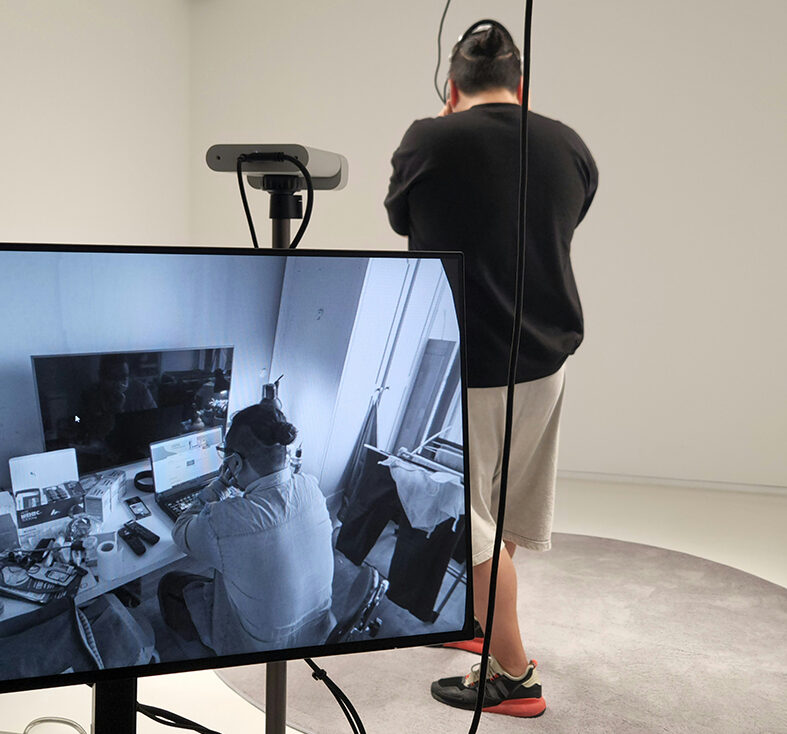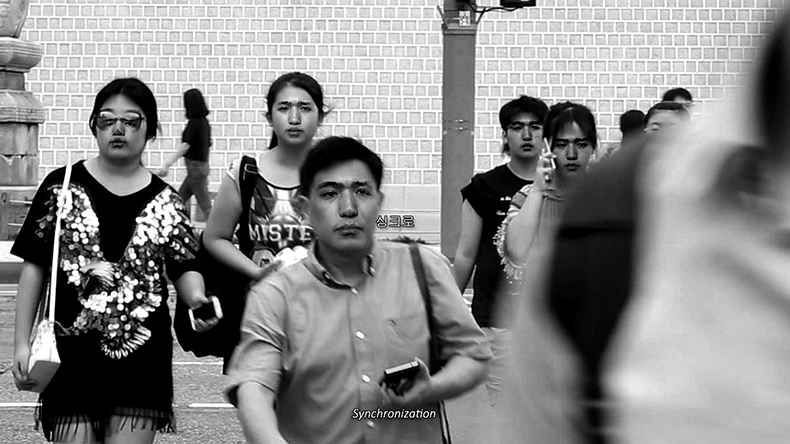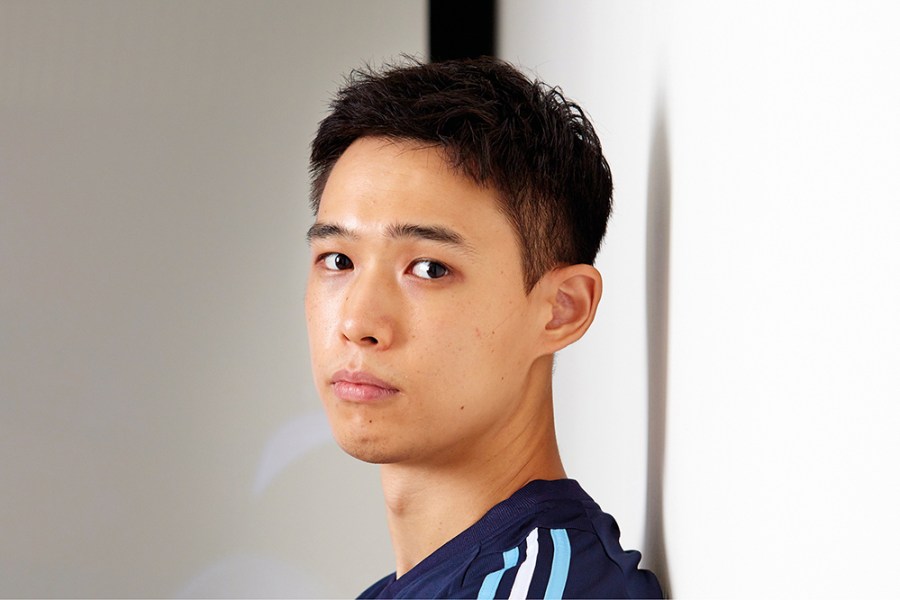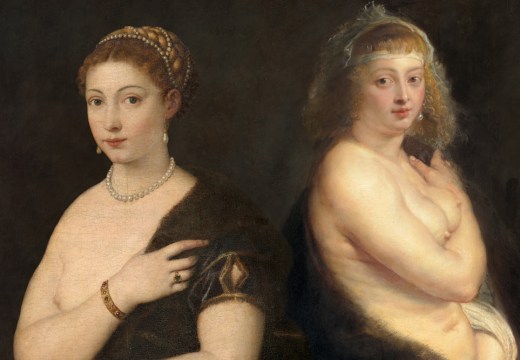In the eyes of South Korean artist Heecheon Kim, modern technology is not concerned with producing images. Instead, ‘the goal of developers is how to make technology invisible so that you cannot distinguish between the technologically-mediated environment and your real world’. In his video-art practice, Kim poses insistent questions about the nature of our digital selves by adapting mainstream electronic software such as GPS trackers, AR image filters and VR environments to triangulate the convergence of consumer technology, mass media and Internet culture. ‘I feel like there are two selves,’ he says, ‘and the biggest theme in my work is: how can I be myself in this era?’
One compelling early attempt to answer this question was Sleigh Ride Chill (2016). This 17-minute single-channel video, commissioned by the 2016 Seoul Mediacity Biennale, deploys face-swapping filters, video-game playback footage and simulated cityscapes of Seoul to generate a disorientating sequence of visuals, all of which are accompanied by a nonlinear narration intertwining explorations of identity, communication and belief. This breakthrough work established Kim as one of South Korea’s most promising young artists, stoking widespread international interest in his practice; to date, his works have been included in biennial exhibitions in Istanbul (2017), Gwangju (2018) and Cairo (2019) and major museum exhibitions in USA, China, Philippines, Denmark and Germany.

Still from Sleigh Ride Chill (2016), Heecheon Kim. Courtesy the artist
In the years since Sleigh Ride Chill, Kim has continued to produce works that exist within the interstice between the real and the virtual. Single-channel videos like Every Smooth Thing through Mesher (2018) and Deep in the Forking Tanks (2019), take on the conceptual and practical implications of VR and its effects on how we think, shedding light on behaviours and perceptions that arise in virtual space. Although these works extended Kim’s enquiry into the problems of virtual consciousness, it wasn’t until last year that he produced a work specifically for a VR platform; Ghost (1990) (2021) made use of Oculus VR headsets to allow viewers to immerse themselves in a 3D simulated environment and directly experience the psychological incongruities facilitated therein.

Ghost (1990) (2021), in operation. Courtesy the artist
‘With a single-channel video work, you can always look away from the screen and check your body immediately,’ says Kim. ‘But in VR, if you want to feel your body you have to focus on the gravity of the body […] You cannot be 100 per cent in virtual reality, but you also cannot be 100 per cent yourself.’ The narrative of Ghost (1990) focuses on powerlifters, who refrain from lifting weights in front of mirrors and instead force themselves to ‘check their bodies’ through sensory stimuli. They opt to ignore their own reflections, Kim explains, because when looking in the mirror ‘you feel like that is you, but it’s actually not; you want to feel safe by checking your form in the mirror, but it’s actually not safe.’
Such disconnects are central to Kim’s video-art practice and underscored by his frequent use of first-person narrators. In Ghost (1990), Kim separates the audio into two layers, with one playing through the Oculus device itself and the other coming from speakers placed inside the exhibition space. He explains that ‘the main thing VR developers want is for you to experience the same thing as the character. So if that character says something, they want it to sound like you are the one speaking.’ Even though VR sets out to make the audience experience a given environment as if they are really there, Kim insists that his works resist this tendency: ‘You are not that person but you are still there, perhaps trapped together with the narrator. You can hear what he is saying, but it’s clear that you’re not actually that person.’

Still from Sleigh Ride Chill (2016), Heecheon Kim. Courtesy the artist
This uncanny sensibility of being two things at once reflects the insidious effects of the Internet on contemporary consciousness, dividing each of us into online and offline identities. Traditionally, the screen has acted as a way of mediating these divided selves; for Kim, however, relying on images is at odds with recent technological developments. ‘I still don’t have the answer for how I can make work without creating any image that really captures somebody,’ he says. In an era when we are increasingly defined according to our actions and encounters in digital space, Kim’s work represents the tenuous relationship between representation and reality: ‘I’m still exploring how to make the images in my works unstable.’
Andy St. Louis is a Seoul-based art critic and the founder of Seoul Art Friend, an online platform dedicated to promoting contemporary Korean art.








